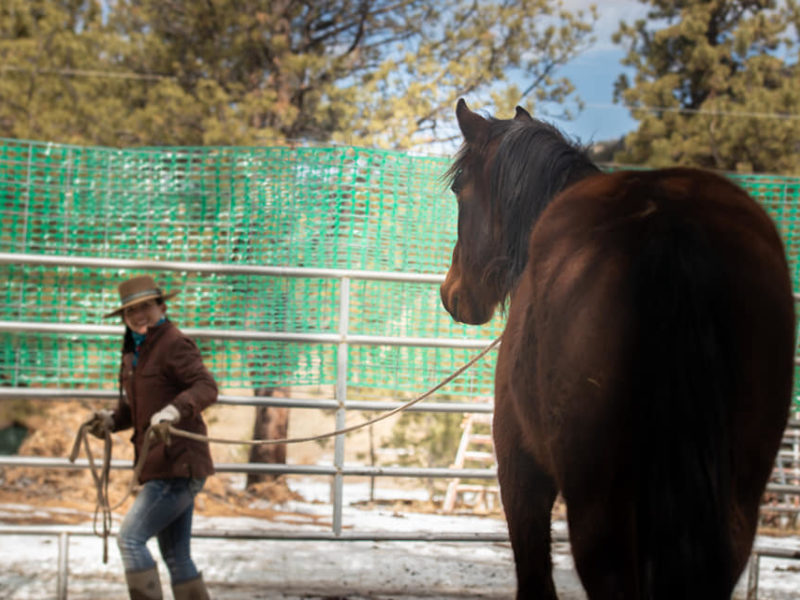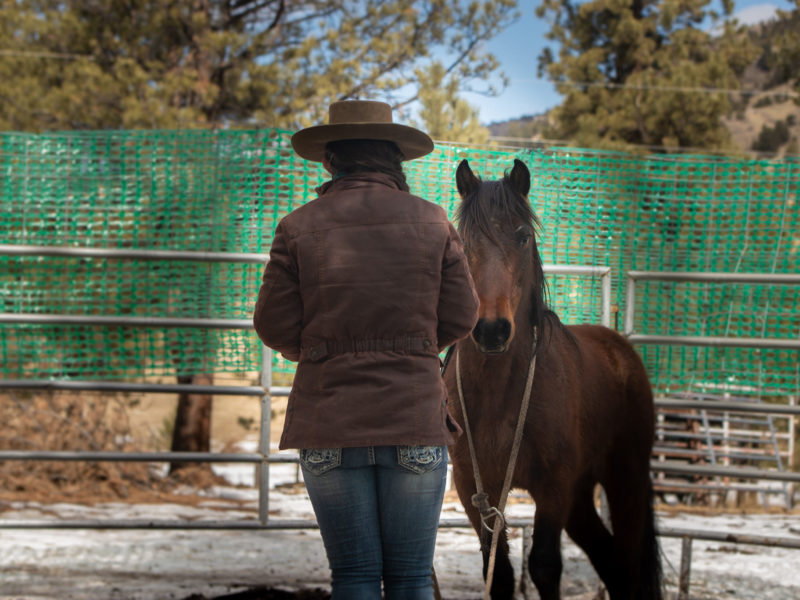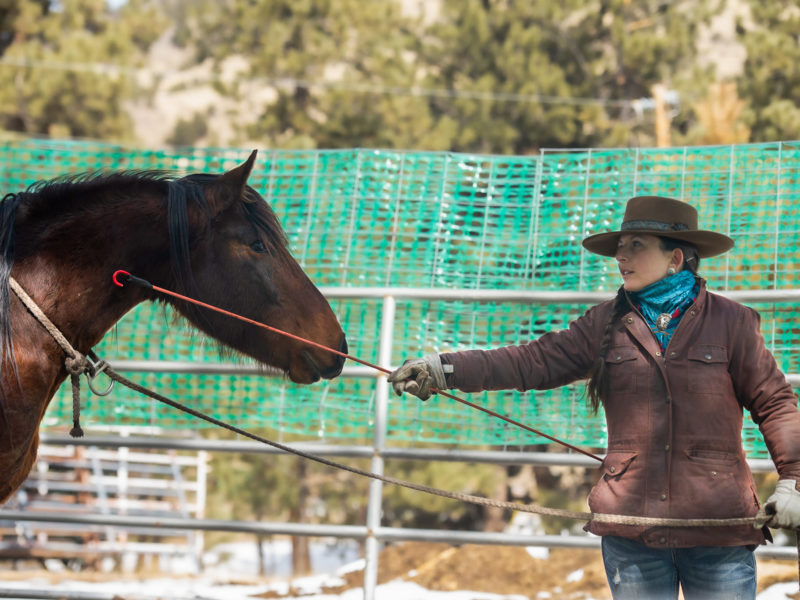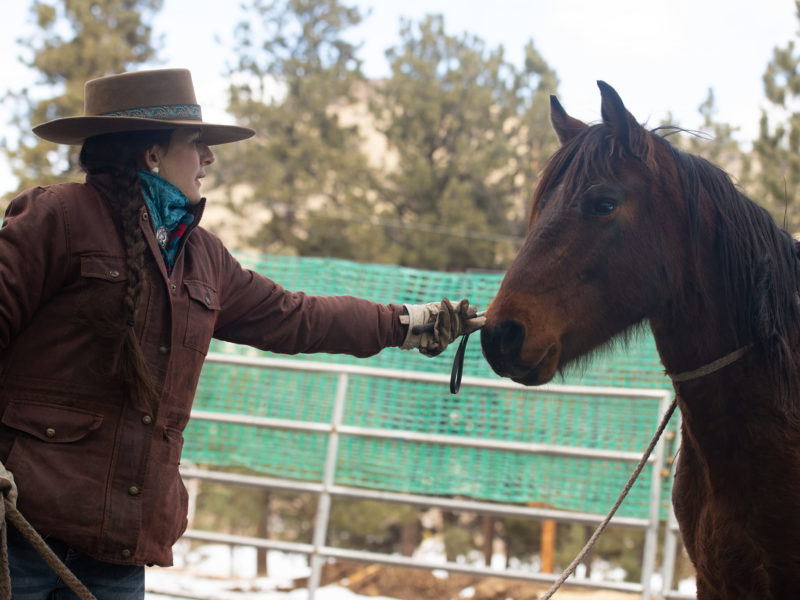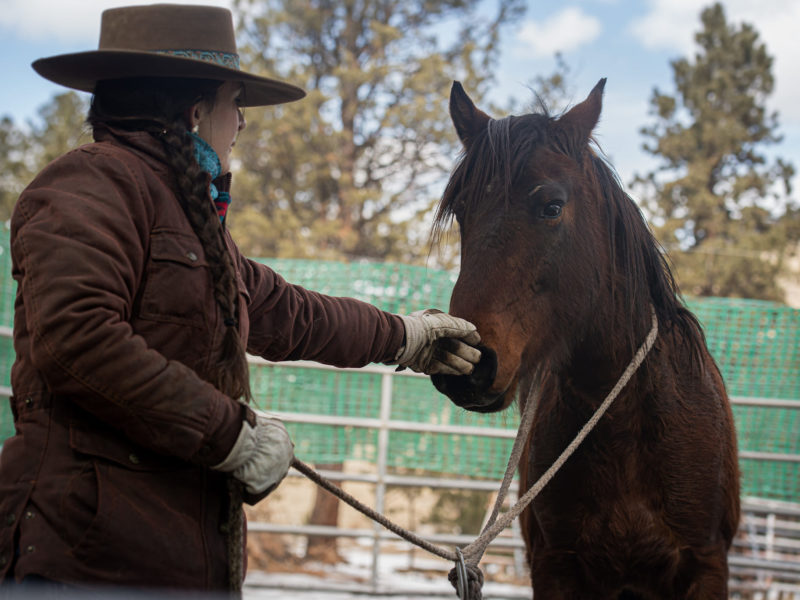This is gentling session # 3 with Behne, 12yo per BLM paperwork, from Sand Wash Basin, Colorado. He already has a loving home, he is with Wild Horse Outreach & Advocacy for basic handling and to learn to like human interaction.
He leads, backs, is starting to yield shoulders, hind quarters and send off in either direction on cue.
This is us working up to and getting the first touches.
I didn’t run or flag the tar out of him, he’s barely ever worked up a sweat, even in his winter coat. I’m trying to get his mind engaged, not his body tired.
When we work with wild horses, we try to keep our sessions short, meaningful, focused and leave the horse feeling confident and asking for more. I call it “leaving some fuel in the tank”.
That way when we come back to them the next time, they’re more likely to be curious and eager than exhausted and resentful.
I’d rather put in 30 minutes and make every second count than drill on a sweaty, tired, scared or frustrated horse for an hour because someone said it has to be a 60 minute session, or there needs to be sweat and dus flying for it to count, or that you can’t quit until you’ve reached your goal.
What I consider a good session often looks pretty boring for people who wouldn’t yet know how to appreciate quiet, steady progress. The Mustang stays below threshold of what his nervous system can handle, but is still engaged enough to learn.
There’s a fine line we need to walk: When they’re bored or not being “heard” they don’t learn. When they’re overstimulated, in fight, flight or freeze, the brain goes off-line and they’re reacting, not responding. That’s where things get dangerous.
Do sessions with higher ‘entertainment value’ happen? Yes they do. Less and less often the more I learn and the more we improve our setup and are able to help the horse find the ‘right’ answer sooner and more easily.
When things do get exciting, I look for the smallest common denominator to bring us back on the same page. Something we can both do, agree on, feel good about and later build or rebuild from. Afterwards I look inward and reflect on ways to do better next time.
When we’re working with, rather than at the horse, Mustang gentling doesn’t have to be chaos, doesn’t have to be scary but can still be effective and yield prompt results.
It’s our job to get these horses out of living in fear and help them trust and understand so they can then be doctored, trimmed, loved on, turned out with other horses, started under saddle, you name it. This is not about tiptoeing and dragging out feet to keep the peace at all cost.
This is about learning to read the horse, understanding how the horse learns and making it easy for them to succeed. There’s a whole lot of questioning and revising our approach and presentation to make things work better, because once we learn to get our of our own and the horse’s way, they usually will do just fine.

